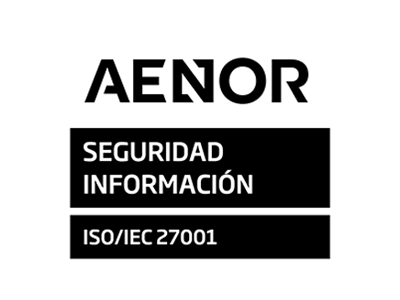How Does AI Streamline Medical Writing Workflows?
December 28th 2023

As a medical writer, there’s no doubt you’ve heard the rumbles about artificial intelligence making waves in the healthcare industry. But how can AI work as a support system for your role? Keep reading to delve into the synergy between AI and medical writing, and explore the key applications you can utilize.
The integration of artificial intelligence has emerged as a transformative force across the healthcare landscape, augmenting the capabilities of medical writers and allowing for the rapid evolution of the field. As the demand for accurate, efficient, and high-quality medical content continues to soar, the collaboration between human expertise and AI technologies holds tremendous potential.
In this post, we’ll explore the growing role of AI in medical writing, its capacity to overcome the challenges faced by medical writers, and how it’s propelling the field into a new era of enhanced productivity, precision, and collaboration.
How does AI help medical writers?
Medical writers face a myriad of challenges in their profession, from the ever-increasing volume of scientific literature to the complex data analysis required for evidence-based content creation. Literature review, data analysis, and manuscript drafting are just a few of the tasks that demand meticulous attention to detail, significant time investment, and expertise in interpreting and communicating scientific information accurately. Here is where AI steps in as a powerful ally, offering a range of tools and techniques designed to assist and empower medical writers.
By introducing AI into the realm of medical writing, we can harness its capabilities to address these challenges more effectively. AI systems can process vast amounts of scientific literature, swiftly extracting and synthesizing relevant information. Moreover, AI-powered algorithms can analyze complex datasets, identify patterns and generate valuable insights that might have otherwise gone unnoticed.
The introduction of AI into medical writing is not intended to replace human expertise but rather to amplify and complement it. AI enables medical writers to enhance their efficiency, optimize the quality of their work, and foster collaboration among peers. As a result, medical writers can devote more time to critical thinking, synthesizing information, and ensuring the accuracy and clarity of their content.
What are the applications of AI in medical writing?
Literature Review
AI has revolutionized the process of literature review, traditionally a laborious task involving manual searching and screening of numerous scientific articles. With AI, this process is automated, leading to comprehensive searches and efficient screening. AI-powered tools can crawl through vast databases, extract relevant information, and identify sources, saving substantial time and effort for medical writers. For instance, machine learning algorithms can analyze text and metadata, enabling efficient identification of relevant studies, and significantly expediting the literature review process.
Data Analysis
When it comes to data analysis, you can make the most of invaluable dealing with complex datasets such as clinical trial data or patient records. Leveraging techniques such as natural language processing and machine learning, AI helps uncover patterns and insights that may elude human analysts. The exceptional levels of speed and accuracy enable the rapid analysis of large volumes of data, facilitating the identification of correlations and trends that can inform medical writing. By employing AI algorithms, medical writers can extract key insights efficiently, aiding in the derivation of meaningful conclusions from medical data.
Manuscript Drafting
AI plays a pivotal role in manuscript drafting. It empowers medical writers in the creation of scientific papers. AI-powered writing assistants and tools contribute to the generation of drafts, suggest revisions, and enhance overall writing quality. AI-powered writing assistants can identify and correct grammatical errors, suggest improvements in sentence structure, and provide feedback on clarity and coherence. Additionally, AI algorithms can help ensure adherence to journal guidelines, such as citation styles and formatting requirements, minimizing the risk of rejections or revisions. While AI enhances efficiency and accuracy, concerns regarding creativity and the human touch persist. It’s important to recognize that human writers remain essential in providing critical thinking, context, and the nuanced aspects of medical writing that require human judgment and expertise.
Medical communication and patient education
AI offers immense potential in medical communication and patient education. Chatbots powered by AI can provide accurate and personalized responses to patients’ queries, offering them information and support. AI-driven tools can assist in developing patient education materials by analyzing medical content and tailoring it to suit patients’ needs, preferences, and language proficiency. By leveraging AI in medical communication, medical writers can effectively engage with patients, promote health literacy, and enhance the accessibility of medical information.
The impact on efficiency, quality, and collaboration
The integration of artificial intelligence in medical writing has a profound impact on efficiency, quality, and collaboration within the field. Tasks that were once time-consuming and labor-intensive can now be automated, saving significant time and effort. AI algorithms can crawl through databases, extract relevant information, and generate comprehensive literature reviews in a fraction of the time it would take a human writer. This efficiency boost enables medical writers to focus on higher-level tasks, such as critical analysis and interpretation of the data, ultimately leading to more robust and insightful medical writing.
Collaboration is also significantly impacted by the integration of AI in medical writing. This technology facilitates seamless collaboration by providing centralized platforms where multiple stakeholders can work together on a project. These tools enable real-time collaboration, allowing medical writers, researchers, and clinicians to contribute, review, and provide feedback simultaneously. AI can also assist in facilitating language translation, breaking down language barriers and promoting international collaboration. With AI-powered translation tools, medical writers can communicate and collaborate with colleagues and researchers from different parts of the world, enabling a truly global exchange of knowledge and expertise. The collaborative nature of AI in medical writing fosters interdisciplinary collaboration, strengthens research networks, and ultimately accelerates advancements in healthcare and medical research.
The importance of training and implementation
Training and implementing AI tools for medical writers present unique challenges that need to be addressed for successful adoption. One of the key challenges is the need for specialized training. Medical writers must acquire the necessary skills and knowledge to effectively utilize AI tools in their work. Training programs that focus on understanding AI algorithms, data interpretation, and the integration of AI into the medical writing workflow are essential. Additionally, ensuring the quality of data used to train AI models is crucial. High-quality, reliable, and diverse datasets are required to train AI systems accurately and avoid bias in the generated output.
Another challenge lies in system integration. Compatibility and interoperability between AI tools and existing systems are essential to maximize efficiency and avoid disruption. System integration should be carefully planned, considering factors such as data security, privacy regulations, and infrastructure requirements.
Addressing potential barriers to adoption is crucial for successful implementation. Resistance to change and the fear of job displacement may hinder the acceptance of AI technologies among medical writers. Educating and engaging medical writers in the benefits of AI, such as increased efficiency and improved quality, can help alleviate concerns and promote acceptance. Access to AI technologies may also be a barrier, especially for smaller healthcare organizations or individual medical writers. Strategies such as partnerships with AI solution providers, collaborative initiatives, or cloud-based AI platforms can help overcome these barriers and ensure wider access to AI tools for medical writers.
Future directions and conclusion
AI in medical writing has a promising future, with advancements and emerging trends shaping the field. AI-powered tools for literature review, data analysis, manuscript drafting, translation, and medical communication enhance efficiency and quality. Challenges in training, implementation, and resistance can be overcome through specialized training, data quality, and strategic adoption. Future developments include improved AI algorithms, explainable AI, and ethical considerations. Despite potential barriers, the integration of AI fosters collaboration and empowers medical professionals. Embracing the synergy of human expertise and AI technology drives advancements, improves patient outcomes, and ensures a bright future for medical writing.
Find out how our AI-powered smart medical writing solution can help you.
Ready to see what we can do for you?
In the right hands, artificial intelligence can take human performance to a hitherto unimaginable level. Are you ready for evolution?




